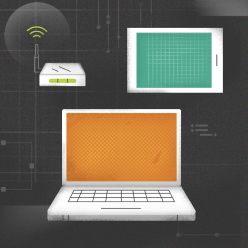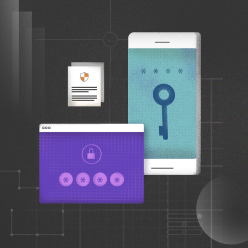Dealing With the Relocation Boom
Here's a 4-step guide to ensure remote worker productivity and job satisfaction.
In October, the file-hosting giant Dropbox said it would shutter some of its offices and make home the primary workplace for its 2,500 employees. Doing so, company officials explained in a blog post, “is an opportunity for us to build an even stronger, more diverse workforce as we hire from increasingly different backgrounds and perspectives.”
As the COVID-19 pandemic grinds on, many companies are embracing the new normal and considering its positive impacts on productivity and job satisfaction. According to a June 2020 PricewaterhouseCoopers survey across multiple industries, 83% of employees said they plan to continue working at home at least one day per week. The same poll found more than half (55%) of employers expect to continue their WFH cultures after the crisis ends.
Businesses are adopting this new model with enthusiasm. In August 2020, The Wall Street Journal reported that many San Francisco Bay Area companies –– including Google, Twitter, Tanium and Slack – were allowing employees to relocate as they made a more permanent shift to remote work.
But what does work from home really look like? For starters, it requires companies to deploy tens of thousands of devices — such as smartphones, laptops, PCs, printers and more — so workers can do their jobs. IT departments must also manage those digital endpoints, as they’re known, updating their software and securing them from threats.
They also need to resolve workers’ new challenges. Those include unstable or unsecured Wi-Fi and internet access and maintaining working relationships with colleagues, according to a recent Slack survey. That’s why it’s critical to outfit workers with the right digital tools, processes and lifestyle support to encourage collaboration, productivity and engagement.
“The pandemic hasn’t just increased a collective appetite for remote work,” says Jim Alkove, chief trust officer at Salesforce. “It’s reshaped traditional views of work-life balance. The tools of productivity need to reflect that.”
Here are four ways to keep your work-from-anywhere employees satisfied and productive.
Gear up

Some workers already had home offices before the pandemic hit. Many others didn’t, and still don’t. Companies must first address their basic needs. Pandio, a San Diego–based AI enterprise software startup, sent its 12 employees standing desks, chairs, laptops and smartphones. “Now we have flexibility,” says CEO Gideon Rubin. Larger companies, such as Twitter, offered to reimburse workers for desks, desk chairs and Wi-Fi.
Aside from setup gear, companies should also focus on updating cloud-based applications, says Alkove, to keep workers connected and to allow them to easily share work projects and collaborate with colleagues. “What used to be a luxury of digital transformation before the pandemic has now become table stakes,” he says.
Digital collaboration platforms, such as Zoom, Slack and Google Meet are also table stakes for getting work done. But companies must become adept at using them for other important processes, like onboarding and training. Salesforce, according to Alkove, is already saving “an unimaginable number of hours and resources” by allowing its 50,000 employees access to Trailhead, its online learning platform.
Zoom out
 Many workers are suffering from Zoom fatigue. And smart companies need to make some important adjustments. Managers should “kill off recurring meetings, get rid of status meetings and move them to digital channels,” says Brian Elliott, vice president of Future Forum , a new research consortium owned by Slack. “Save team time for deeper problem solving, and use it to build social cohesion.”
Many workers are suffering from Zoom fatigue. And smart companies need to make some important adjustments. Managers should “kill off recurring meetings, get rid of status meetings and move them to digital channels,” says Brian Elliott, vice president of Future Forum , a new research consortium owned by Slack. “Save team time for deeper problem solving, and use it to build social cohesion.”
Another word of caution for managers: Use “people analytics” tools with discretion. They’re great for tracking worker activity and seeing how often and with what digital tools teams are engaging. But the software is no replacement for human connection.
“Some managers can forget people and just watch them through the workflow,” says Dana Borowka , CEO of Lighthouse Consulting Services, which focuses on recruiting and talent management. “That’s the kiss of death.” If a collaboration tool isn’t being used, pick up the phone and ask why.
IT, phone home

There’s nothing worse than waiting on hold for the IT help desk, or having your query— where’s my new laptop, or the dongle to connect my monitor?—disappear into the ether. For remote workers, this is a special circle of frustration. IT departments are “an enabling component of a good workplace experience,” noted Jeff Spar, former CIO of the Metropolitan Museum of Art, in a recent issue of Harvard Business Review. “If it isn’t working well, everyone is frustrated.”
Part of the problem is that many companies see the employee experience solely as an HR function. That needs to change, says Salesforce’s Alkove. “The best thing a CEO, CSO or IT leader can do to secure a work-from-anywhere environment is to nail the basics,” he says. This includes keeping employee devices up-to-date with the latest software, enabling multifactor authentication and staying on top of security patches.
Learn more about the future of Employee Service ManagementAdding processes such as a single sign-on with multifactor authentication not only makes everything more secure, Alkove adds, it “reduces employee friction by allowing them to sign in only once to gain trusted access to the entire range of the tools they need to do their job.”
Clock out

Elliott suggests employers rethink the 9-to-5 workday. “The best results come from breaking habits formed in the industrial revolution,” he says. “Most companies just did a ‘lift and shift’ of in-person meetings onto video calls. That’s never been the most productive way to work.” Instead, managers should let workers set hours that best suit their home needs, and encourage them to communicate their availability through collaboration tools.
“Enabling people to take breaks to walk away from work, planning their day and getting exercise all boosted work-life balance and productivity, reduced stress and improved belonging,” says Elliott. He adds one final bit of advice: “Turn off notifications when you’re not working!”
Illustrations by Michelle Jacobs








